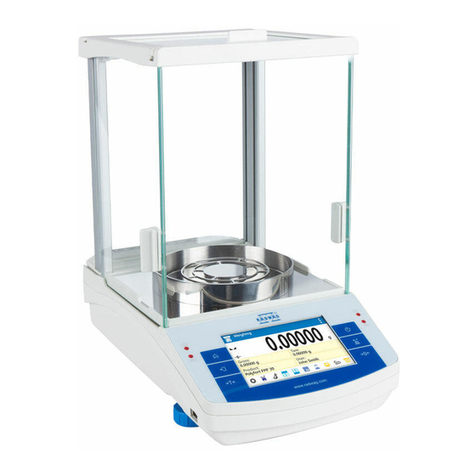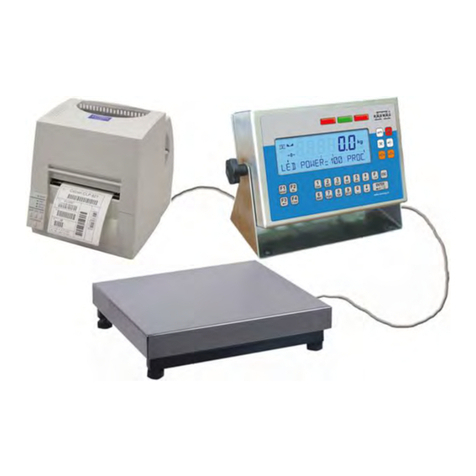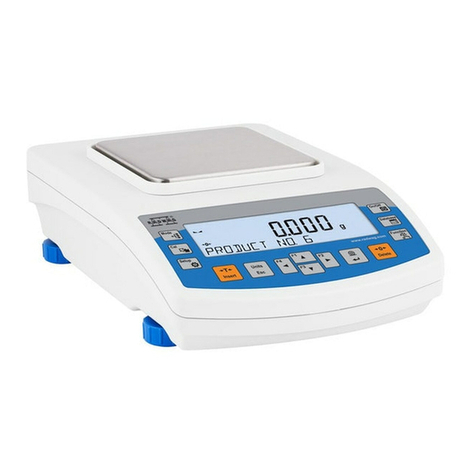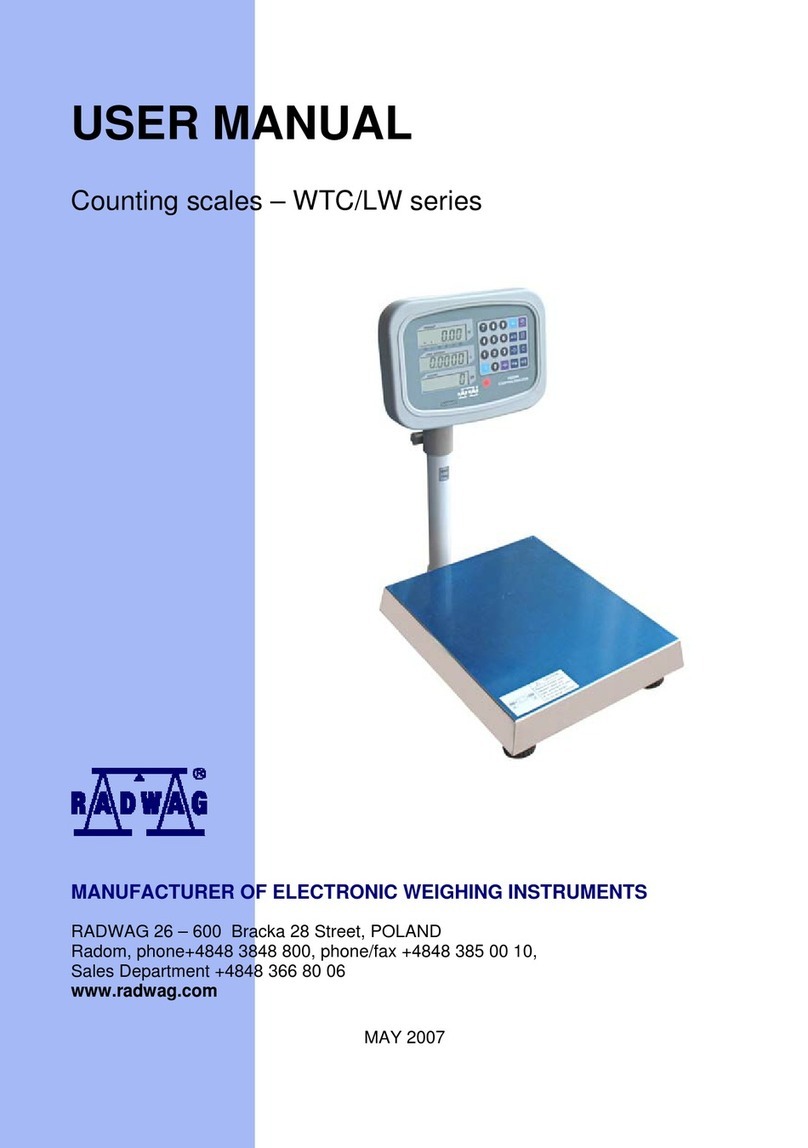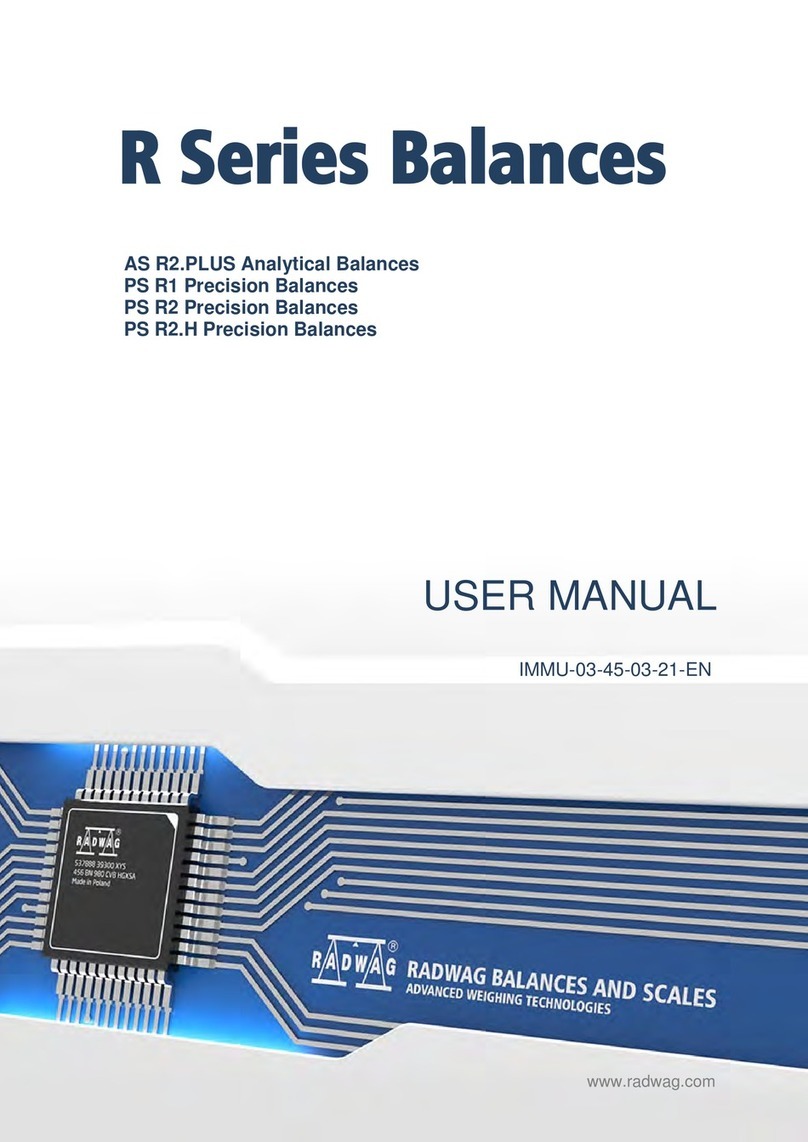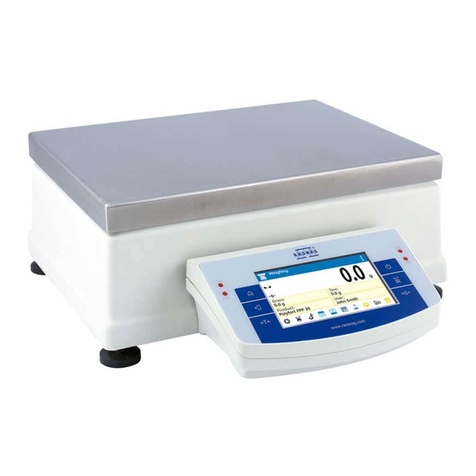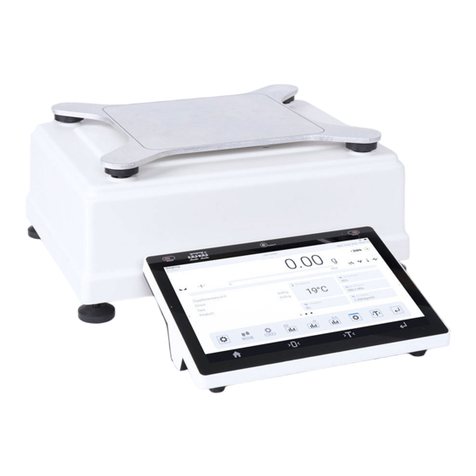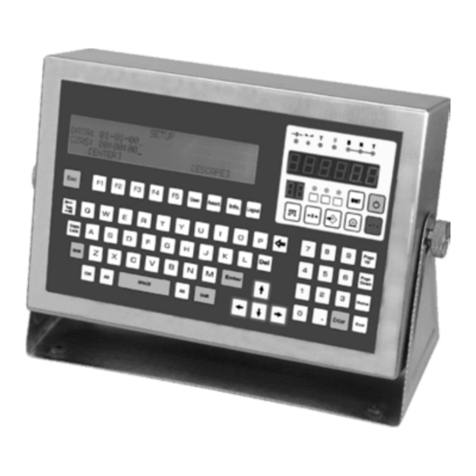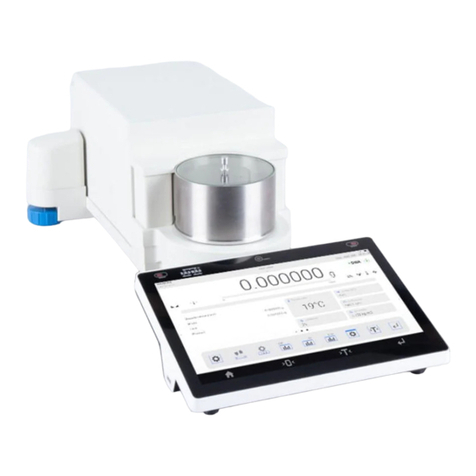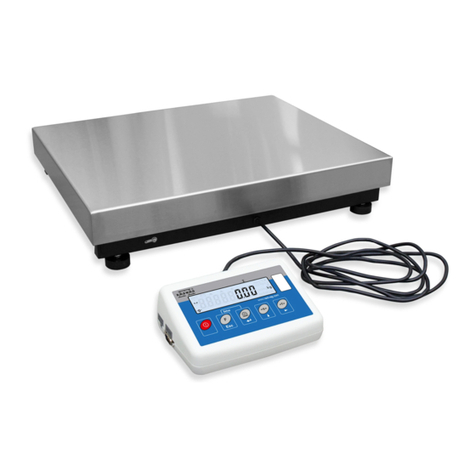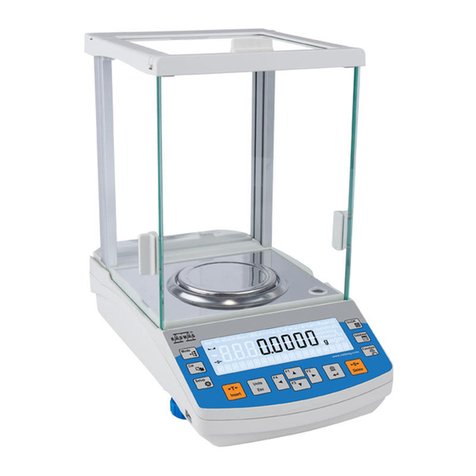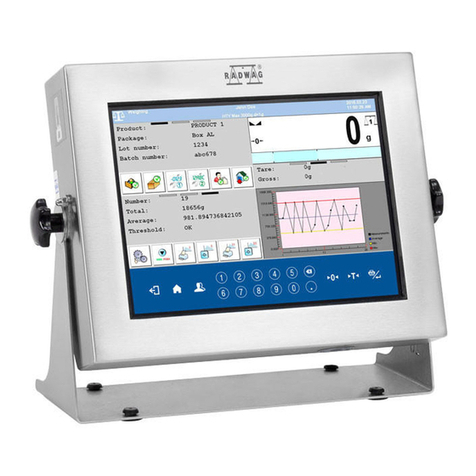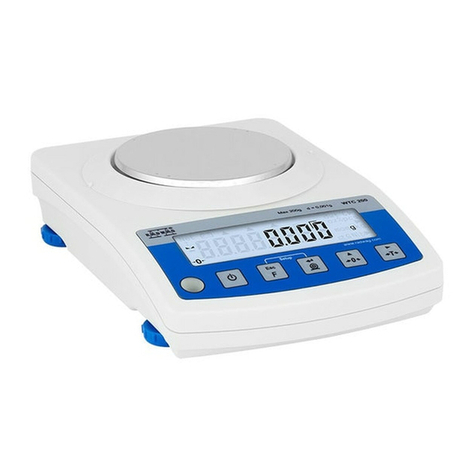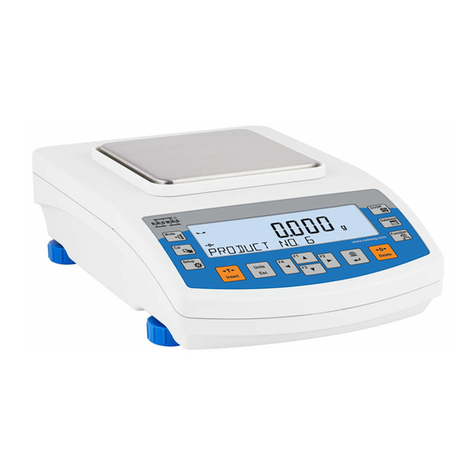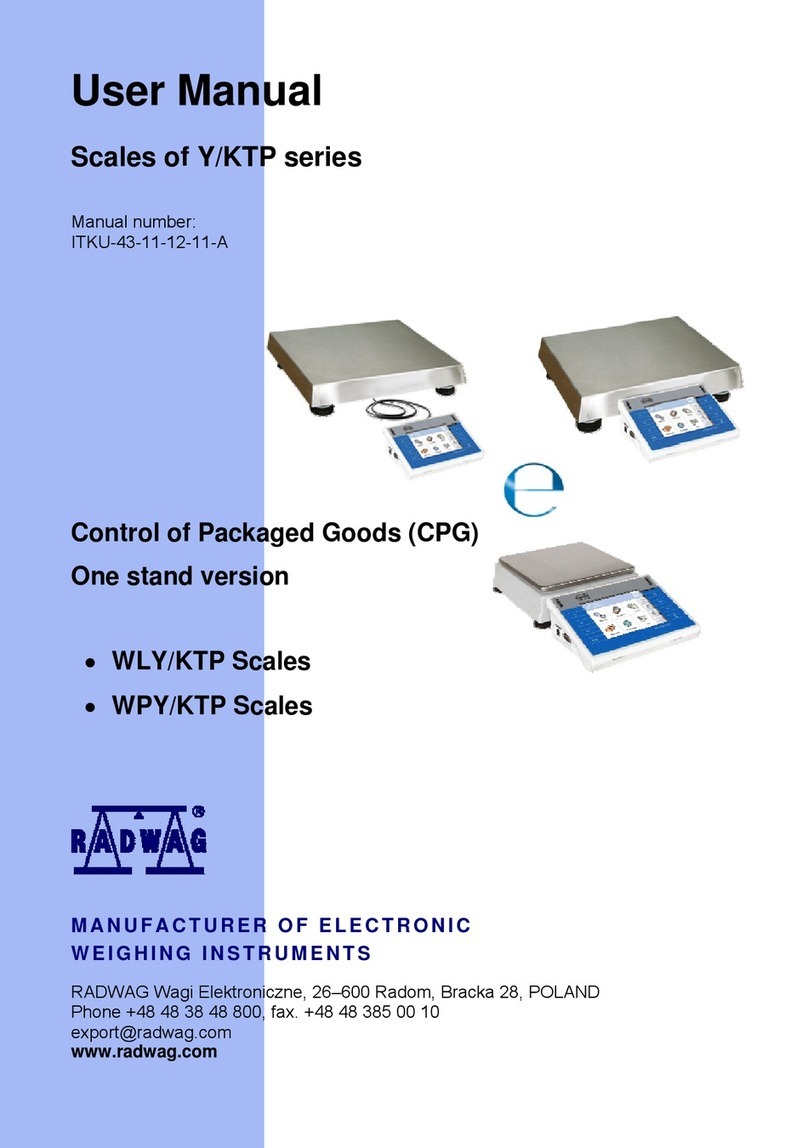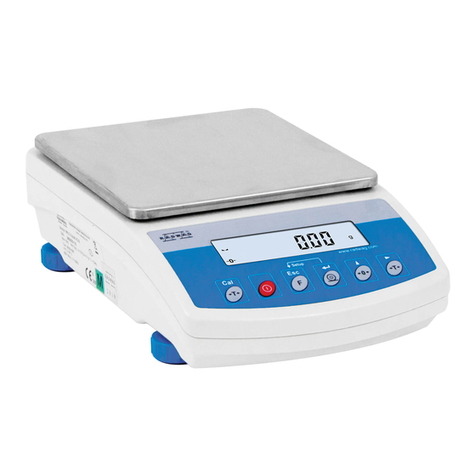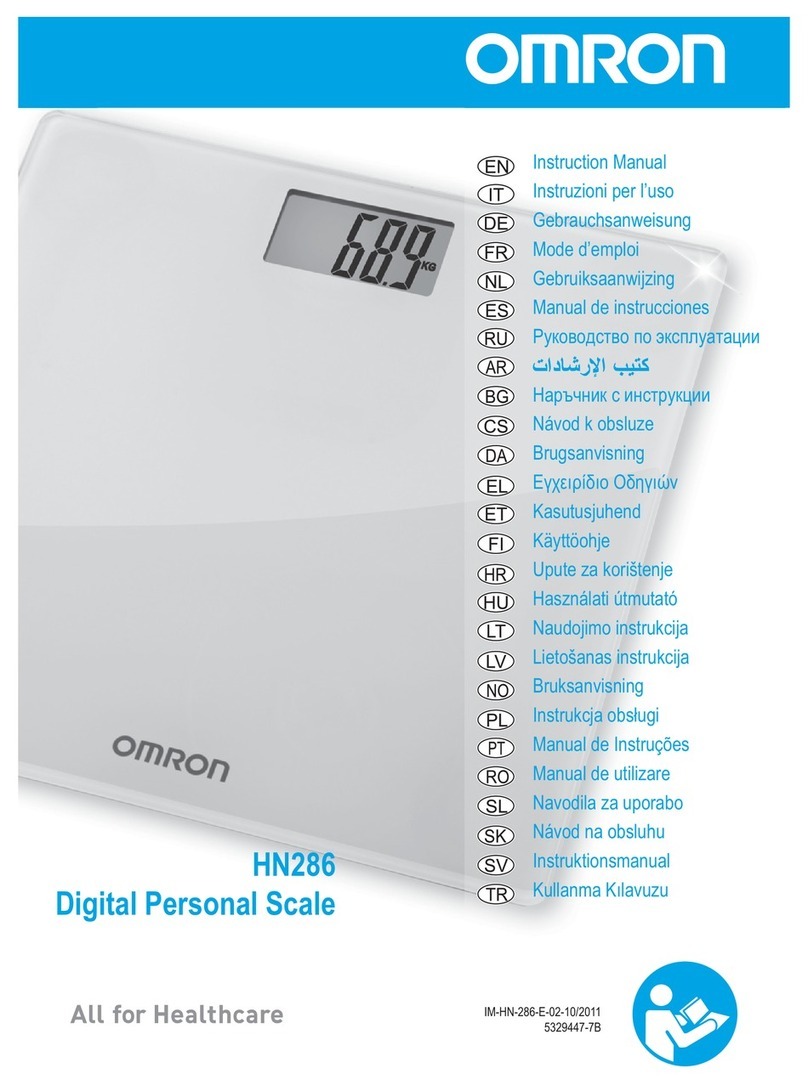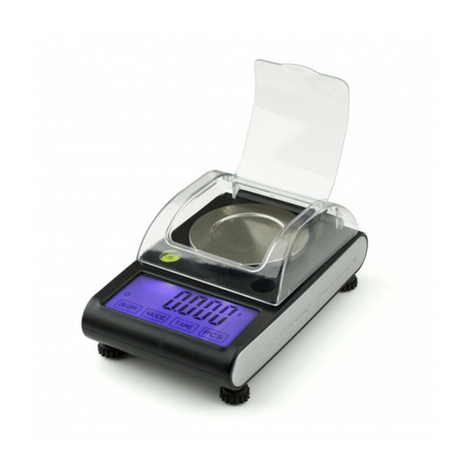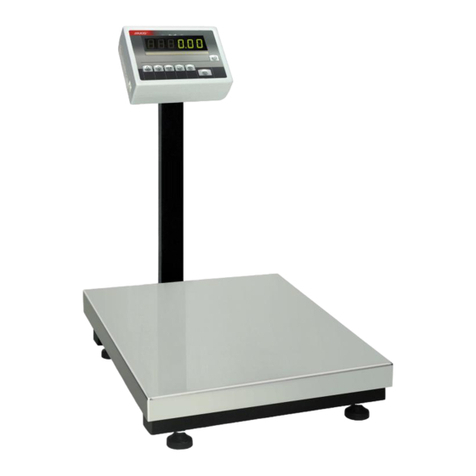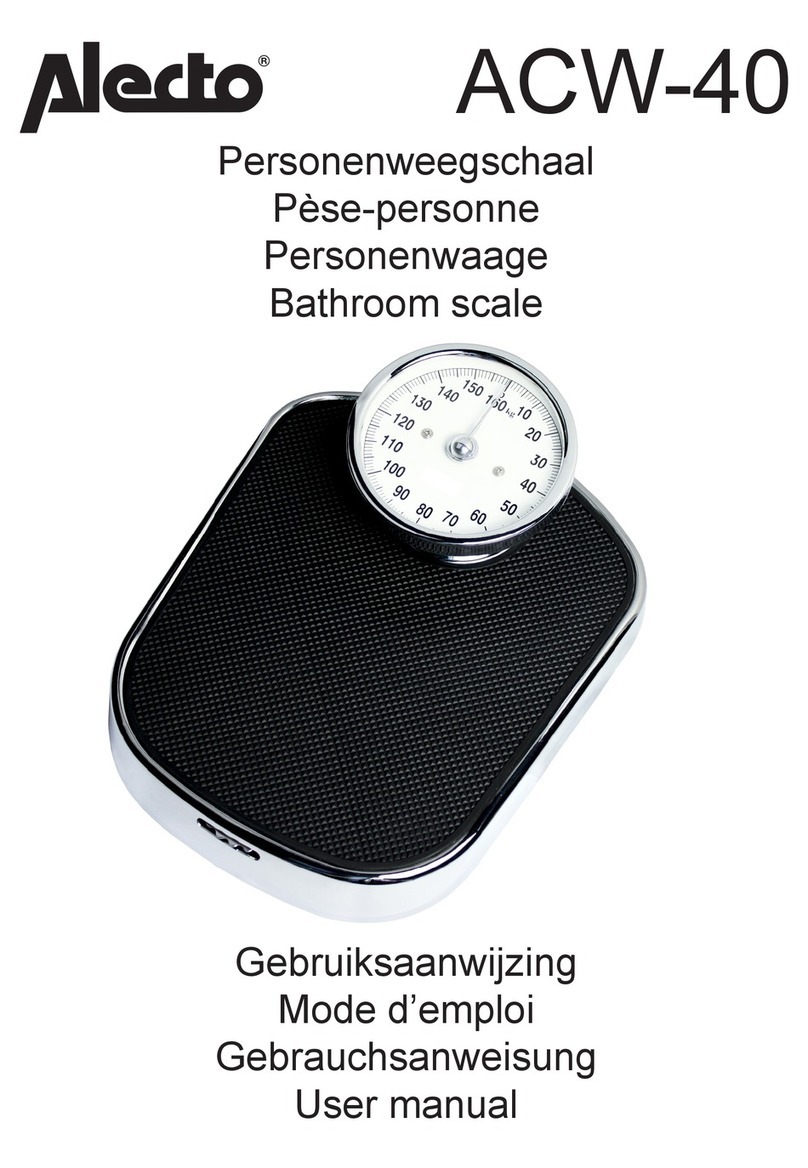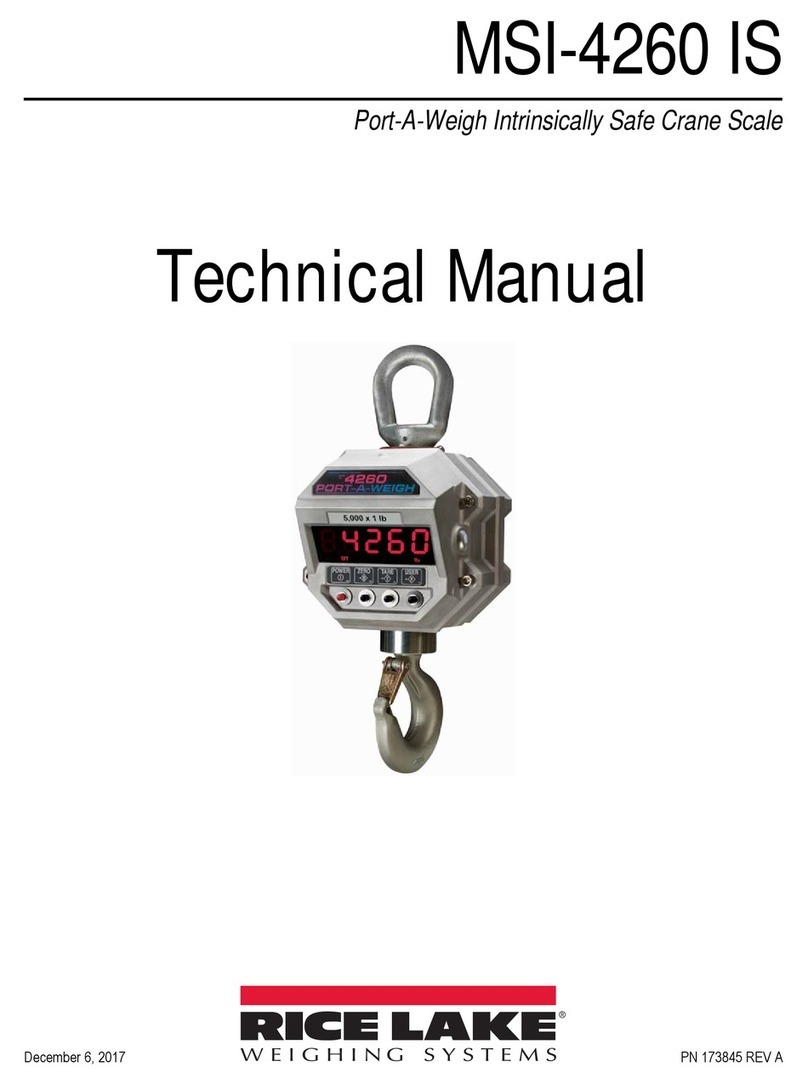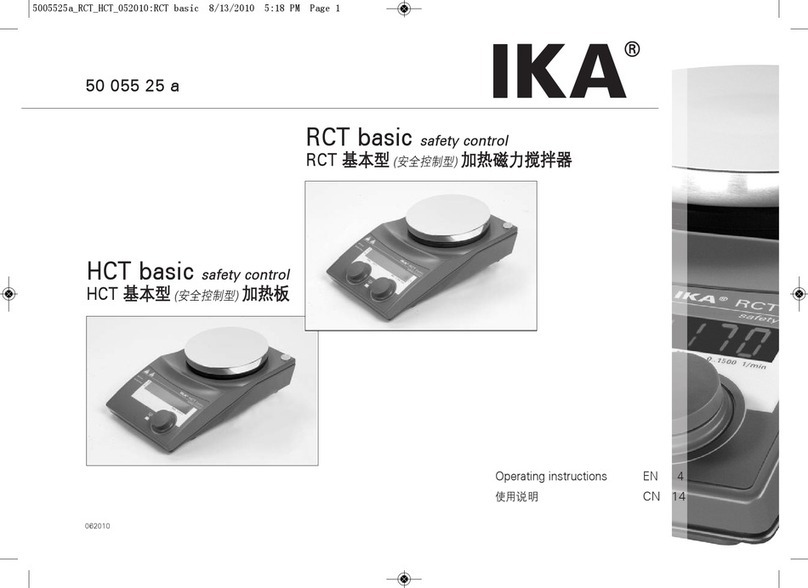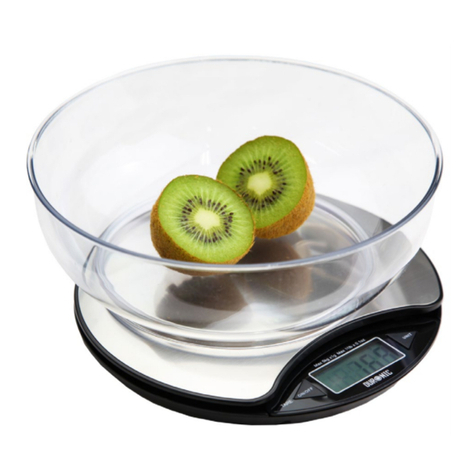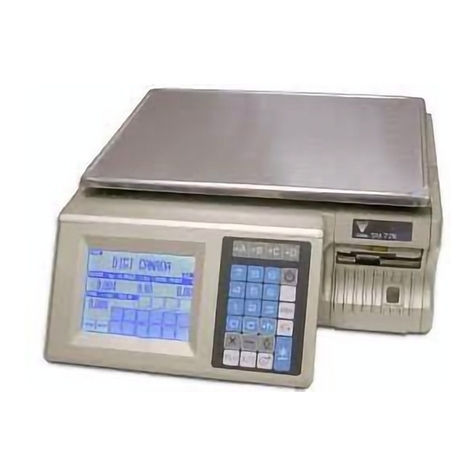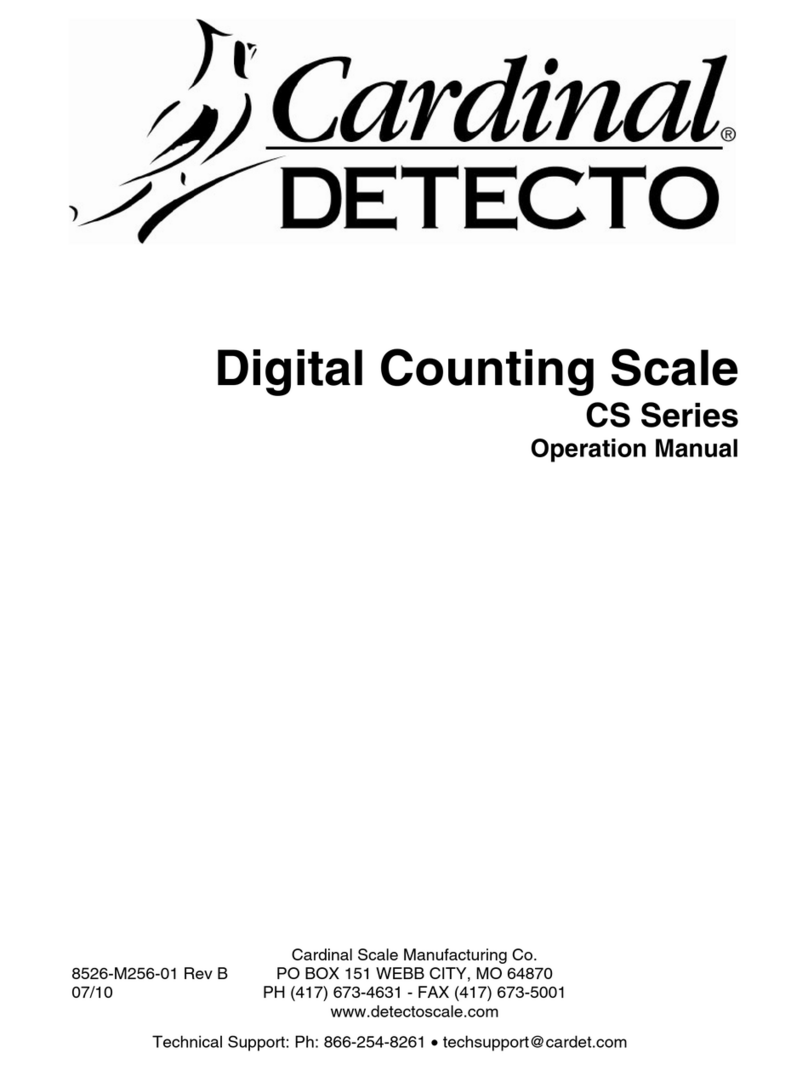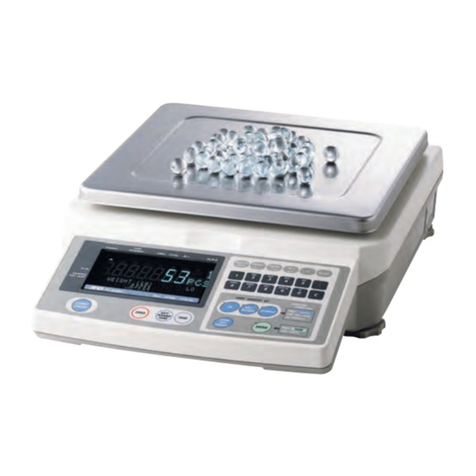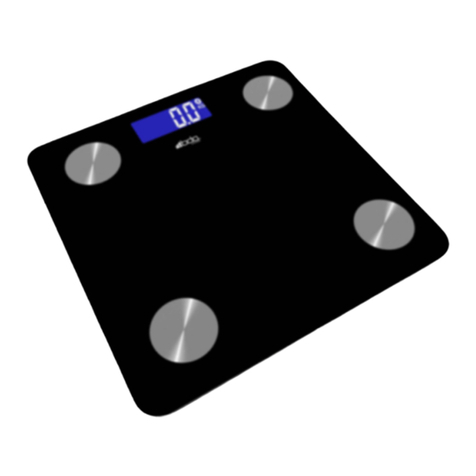- 4 -
10.3.Printout of all balance parameters through RS 232 port...........................27
11.BALANCE CALIBRATION.....................................................................28
11.1.Balance with internal calibration ...............................................................28
11.2.Entering calibration menu.........................................................................30
11.3.Calibration test..........................................................................................33
11.3.1.Balances with internal calibration.....................................................33
11.3.2.Balances with external calibration....................................................34
11.4.Manual calibration.....................................................................................35
11.4.1.Internal calibration............................................................................35
11.4.2.External calibration...........................................................................36
11.5.Calibration report printout .........................................................................36
12.SETTING PRINTOUTS FOR GLP PROCEDURES..............................37
12.1.Setting the contents of printouts for GLP procedures...............................38
13.BALANCE OPERATING MODES .........................................................42
13.1.Counting details of the same mass...........................................................43
13.2.+/- control referring mass of set standard.................................................47
13.3.Control of % deviation referring mass of standard....................................49
13.3.1.Mass of standard determined by its weighing ..................................50
13.3.2.Mass of standard entered to balance memory by user.....................51
13.4.Defining thickness of solids and liquids ....................................................52
13.4.1.Testing thickness solids ...................................................................52
13.4.2.Testing thickness of liquid................................................................53
13.5.Summing function.....................................................................................53
14.FUNCTIONS FOR USING RS 232........................................................55
14.1.Speed of transmission..............................................................................56
14.2.Continuous transmission ..........................................................................57
14.2.1.Continuous transmission off in actual interval ..................................57
14.2.2.Continuous transmission of in basic units ........................................58
14.3.Setting type of operating for RS 232 joint .................................................59
14.4.Designation of data type sent through RS 232 joint..................................60
14.5.Designation of minimum mass for operating of some functions................61
15.COOPERATION WITH PRINTER OR COMPUTER.............................62
15.1.Schedules of connecting conductors........................................................63
15.2.Printing data with date and time................................................................64
15.3.Cooperation with statistic printout Kafka SQS ..........................................64
15.4.Format of sending data.............................................................................64
15.4.1.Format of sent data after pressing the PRINT button.......................65
15.4.2.Format of sent data for orders generated from the computer...........65
16.WEIGHING LOADS UNDER BALANCE...............................................66
17.LIST OF ORDERS IN RADWAG BALANCES ......................................67
18.ERROR MESSAGES.............................................................................68


